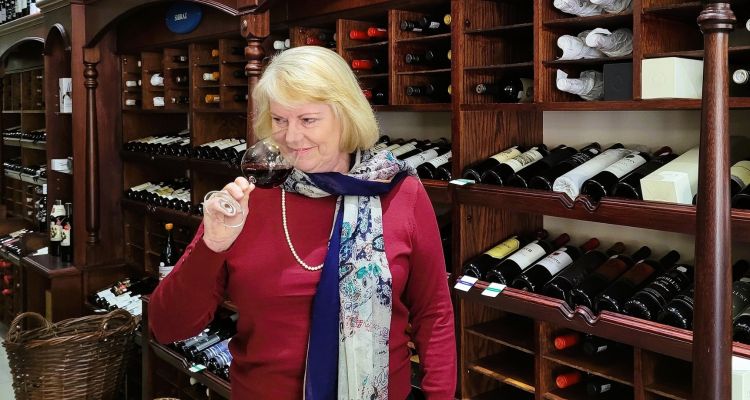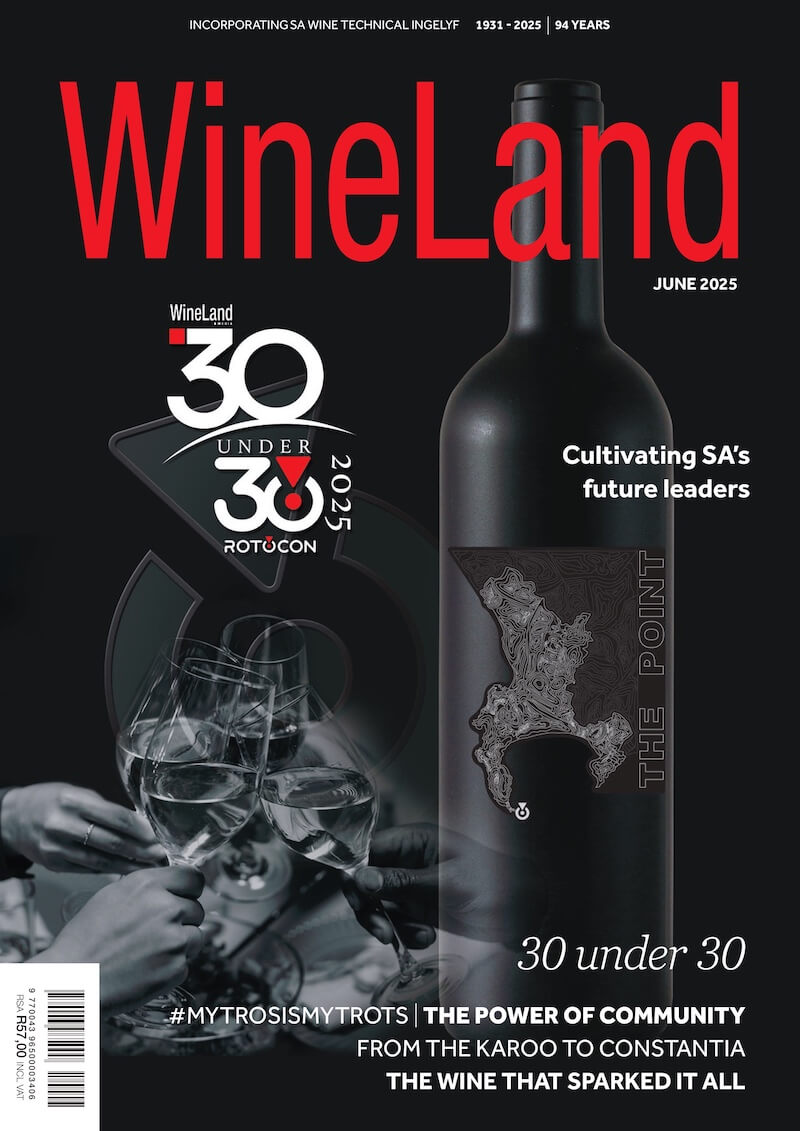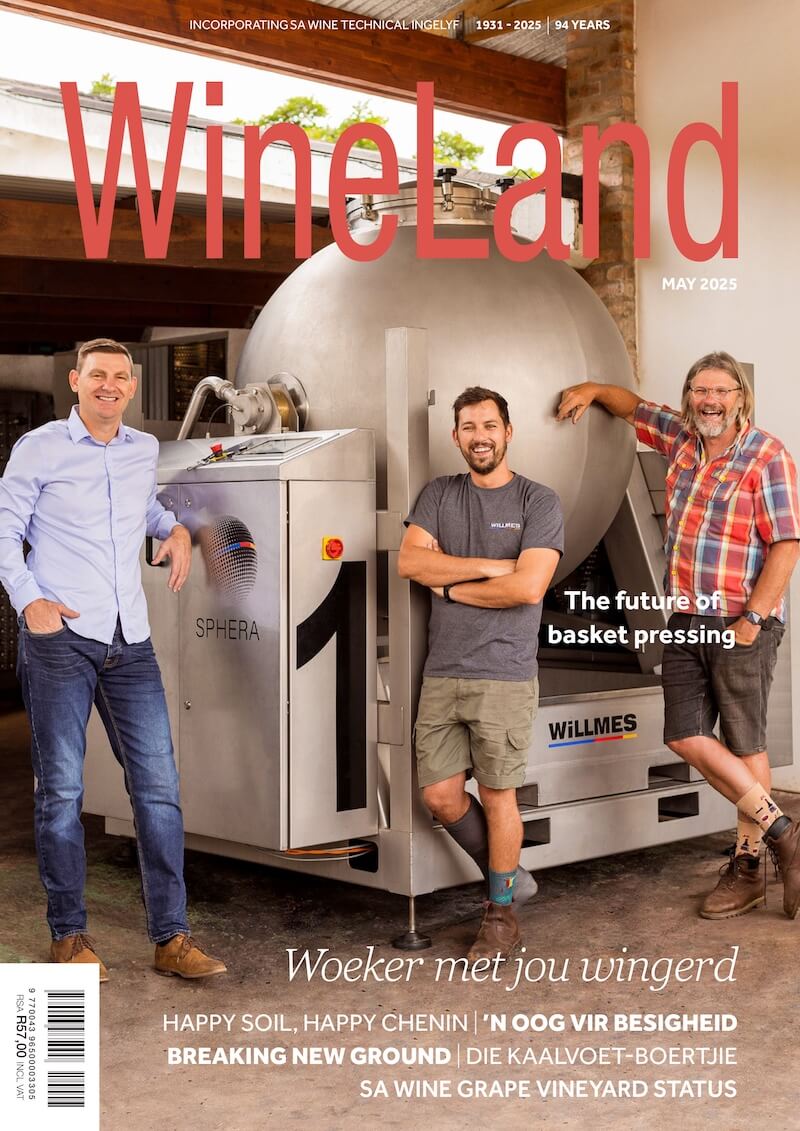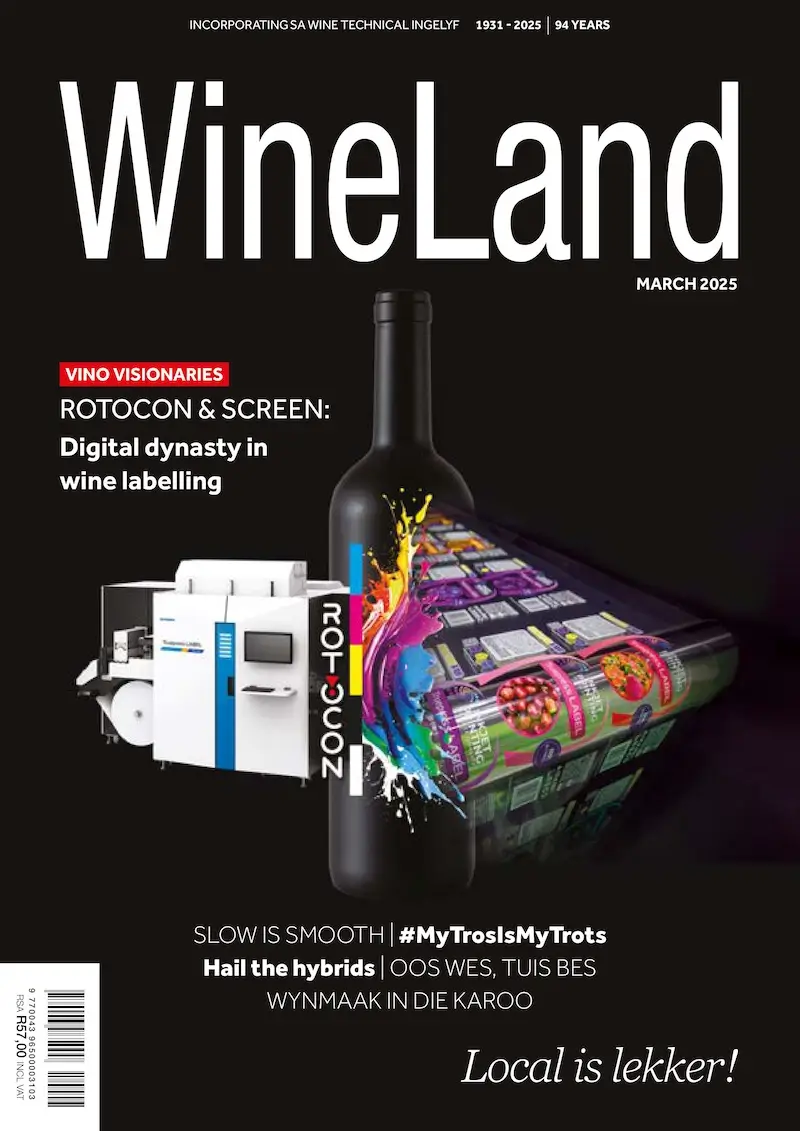As the dust settles on the 2025 harvest season, Steenberg Vineyards reflects on a year marked by resilience, consistency, and exceptional quality. With steady yields, outstanding grape health, and a harvest timeline aligned with historical norms, winemaker Elunda Basson and viticulturist Vlok Hanekom believe 2025 will deliver one of Steenberg’s finest vintages.
Steenberg Wine Estate holds the distinction of being the first Cape farm, established in 1682. Nestled in the Constantia Valley — the world’s oldest New World wine-growing region — Steenberg’s rich history of craftsmanship and innovation is reflected in every bottle.
The estate’s vineyards are rooted in 500-600 million-year-old decomposed granite soils, lending minerality and complexity to Steenberg’s signature Sauvignon Blanc and Bordeaux-style blends. With vineyards at the foot of Table Mountain and just 5 km from False Bay, Steenberg benefits from cooling ocean breezes and gentle morning sun — conditions that encourage slower ripening, enhanced flavour concentration, and remarkable ageing potential.
“This vintage has all the hallmarks of greatness,” says Elunda Basson, Steenberg’s winemaker. “From the very start of the season, the conditions were incredibly balanced — very few extremes, just steady ripening conditions that allowed our grapes to develop beautifully.”
Harvest began on January 16 with Chardonnay for the estate’s sparkling base wines — six days later than in 2024. “The slightly delayed start gave us exceptional fruit,” says Basson. “Our Chardonnay and Pinot Noir base wines for Cap Classique are showing remarkable freshness and ageing potential, thanks to this season’s lower pH and higher acidity.”
The estate’s first Sauvignon Blanc grapes, destined for their sparkling range, were picked on January 23 — the same date as 2024 — at 19 Balling. “Timing is everything,” explains Basson. “We’ve been incredibly fortunate that despite the delayed winter and slow start to the season, our Sauvignon Blanc blocks kept pace beautifully.”
Viticulturist Vlok Hanekom credits the stable weather for maintaining this balance. “The season gave us a bit of everything — warm spells, cooler periods, and even a little rain,” he notes. “The average temperature between January and March was 19.81°C, with 30.8mm of rain. While these rain spells could have been a concern, the prominent wind — reaching speeds of up to 66km/h — helped dry the vines quickly, ensuring no impact on fruit health.”
“Our Sauvignon Blanc this year is particularly exciting,” says Hanekom. “We maintained small green tips on the vines throughout the warm days, which is key to preserving acidity. Deep, prolonged irrigation cycles allowed us to keep the vines hydrated and sugars steadily climbing.”
Basson agrees: “We’re thrilled with the Sauvignon Blanc components we have to work with — there’s an exciting range of flavour profiles that will allow us to create a beautifully complex Steenberg The Black Swan Sauvignon Blanc, one of our flagship wines.”
Basson and Hanekom are excited about Steenberg’s Cabernet Sauvignon quality, too. “The Cabernet Sauvignon is picture-perfect this year,” says Hanekom. “Thanks to late pruning, the bunches are full, healthy, and beautifully structured — and the yields are above average. The cooler nights toward the end of the season have been crucial in preserving acidity and allowing phenolic ripeness to develop optimally.”
Basson echoes this sentiment: “This could be one of the finest Cabernet Sauvignon vintages we’ve seen in years. The fruit is balanced, vibrant, and packed with the structure we need for long-term ageing.”
Steenberg’s Merlot harvest was smaller than usual due to some old blocks being uprooted in 2024. “While yields were down,” explains Hanekom, “the quality remains exceptional. We still have fantastic Merlot to blend into our flagship Steenberg Catharina Red Blend wine alongside our Bordeaux varietals.”
The estate’s Nebbiolo crop yielded above-average volumes, while Malbec was harvested just in time to avoid the risk of rain damage. “Our approach to thinning out clusters early in the season paid dividends,” says Hanekom. “We dropped uneven bunches and managed canopy growth carefully to ensure the fruit achieved maximum flavour and concentration.”
Basson emphasises that Steenberg’s harvest success stems from 12 months of meticulous vineyard care.
“Harvest doesn’t start in January; it’s a continuous process,” she says. “Our regenerative practices — from soil management to precise water control — are essential in consistently producing high-quality fruit.”
Steenberg’s focus on soil health involves tailored mineral treatments and strategic cover crop rotations to replenish nutrients. Water conservation methods — including efficient irrigation, alien tree removal, and careful dam management — further enhance vineyard resilience.
“Our goal is to ensure our soils are rich and healthy for generations to come,” says Hanekom. “These sustainability efforts are vital in producing consistently high-quality fruit.”
Both Basson and Hanekom reflect on the powerful energy that accompanies harvest season — a culmination of patience, precision, and teamwork.
“Harvest is an electric time,” says Basson. “But it’s the months of preparation — the care we put into every vine and every block — that makes a season like this possible.”
“I’m incredibly excited about the 2025 vintage,” concludes Basson. “With the outstanding fruit we’ve brought in this year, I predict this will be one of Steenberg’s finest vintages yet.”













